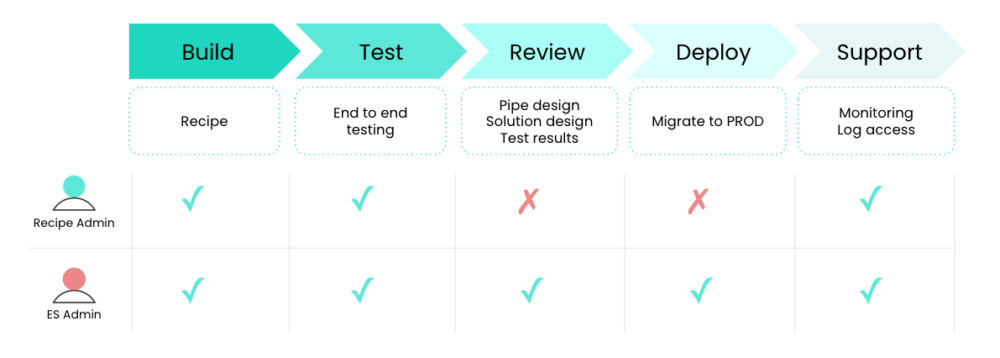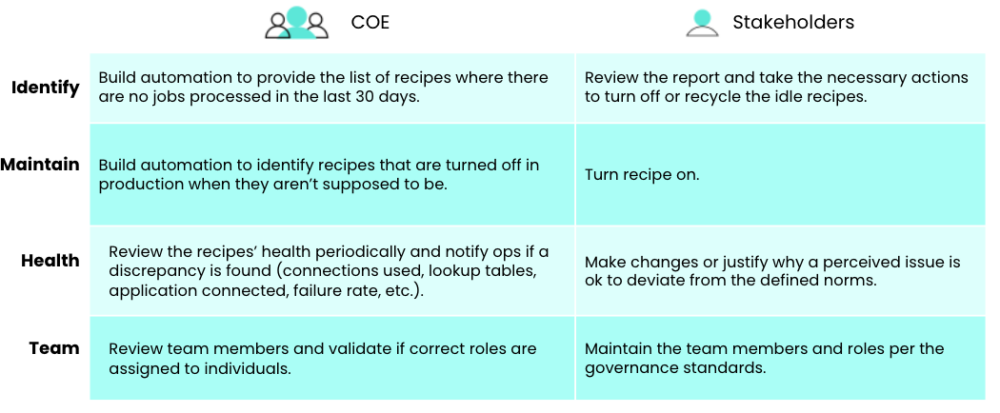When the Enterprise Systems team at Box inherited Workato in 2019, they uncovered a myriad of issues.
The recipe count (or the number of individual automations) well exceeded Box’s subscription; there wasn’t any documentation on their recipes, making it impossible to identify those that were still needed; and recipe development was taking place in production, leading to all kinds of errors.
Hima Satoor, the Director of Enterprise Systems at Box, cited the following as the sources of these issues:

- Lack of ownership: There wasn’t a defined owner at the recipe level.
- Limited visibility: Teams were working in silos and didn’t know what their colleagues were implementing—leading to many duplicate or similar recipes.
- Zero traceability & accountability: Business users didn’t know who to contact when they had questions or needed help.
- Lack of identification of costs: Duplicate and unused recipes were increasing their subscription costs.
With these issues in mind, coupled with the business teams’ desire to continue using the platform themselves, Satoor and her peers decided to adopt an automation governance model they refer to as “Governance Lite.”
Here’s a closer look at how the model works and the results they’ve seen since implementing it.

Want to learn more?
You can catch everything Satoor shared by watching the full recording of her session from Automate.
How Box performs automation governance
Satoor and her team started by setting up roles in Workato with clearly defined responsibilities: Recipe Admin allows business users to create and collaborate on recipes in their development and testing environments; ES Admin enables the enterprise systems team to review the recipes in the testing environment, provide feedback to the appropriate business users, and once the recipes work as planned, pushes them to production.

On top of these roles, Satoor’s team set up an automation center of excellence.
The center of excellence consists of various roles, from developer to QA to administrator, ensuring they execute a number of tasks effectively. This includes developing and sharing best practices and standards (e.g. always including error handling in a recipe), providing periodic training on the new features and functionality available to business users, and performing recipe management.
Satoor elaborated on the COE’s recipe management responsibilities and how the business users were expected to respond:

Related: How to pick an automation operating model that’s right for your business
Less failures, lower costs, and more automation builders
Satoor cited a variety of benefits since implementing their governance model:
- Since business users no longer have access to the production environment and the COE team is tasked with reviewing recipes, there are significantly fewer recipe failures.
- The enterprise systems team has been able to consolidate duplicate or largely overlapping automations, lowering the recipe count by 48% without any loss in functionality.
- Business users can now view what their colleagues are building in the dev and test environments, helping them brainstorm use cases while avoiding recipes that are already being addressed.
- Additional business teams (including recruiting, marketing, and product security) have gained access to the dev and test environments, allowing them to leverage their unique expertise in building impactful automations.
With Box’s automation governance processes still maturing, these benefits are likely to compound in the years to come.
